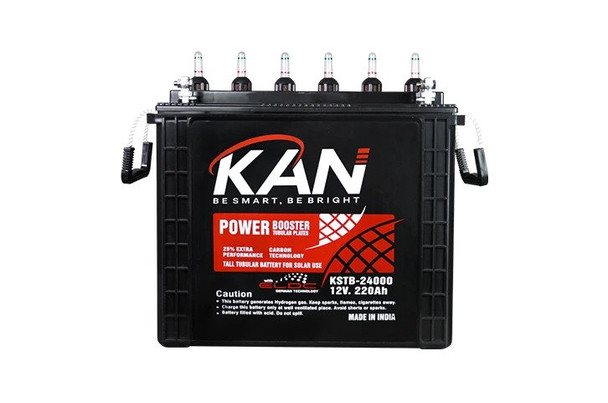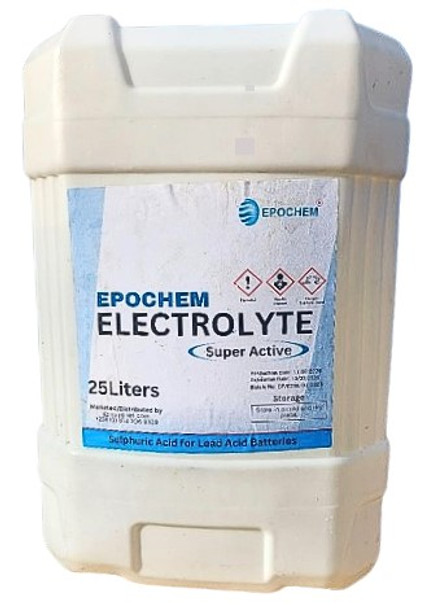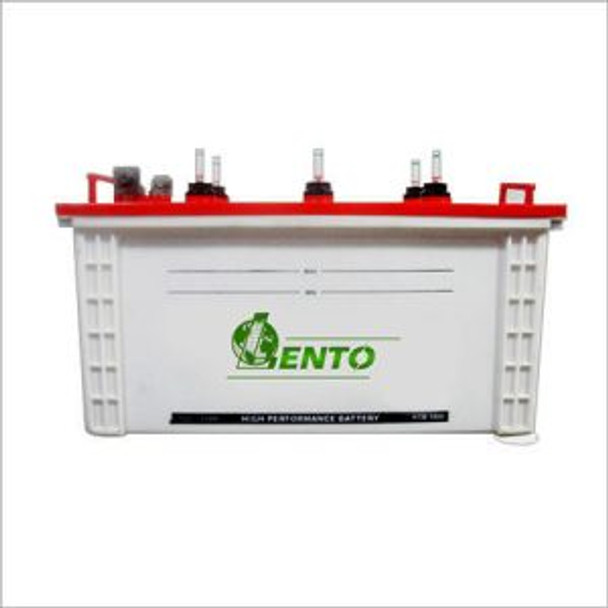The Critical Role Of Electrolytes In Battery Operation
Introduction
Electrolytes are indispensable components of batteries, playing a pivotal role in their operation and performance. Their significance lies in facilitating electrochemical reactions that generate electricity within batteries.
What is a Battery?
Through the process of electro chemical oxidation-reduction (redox), a battery is a device that directly transforms chemical energy found in its active components into electric energy. Electrons are transferred from one material to another during this kind of reaction through an electric circuit. The actual electrochemical unit used to produce or store electric energy is called a cell, even though the term "battery" is frequently used.
Kan 12v. 220AH Solar Tubular Battery 
How Does Electrolytes work?
By encouraging the flow of ions from the cathode to the anode during charging and in the opposite direction during discharging, electrolyte acts as a catalyst to make a battery conductive. Ions are electron-gained or electron-lost electrically charged atoms. Soluble salts, acids, or other bases in liquid, gelled, or dry forms make up the electrolyte of a battery. Additionally, electrolyte is available in solid ceramic, polymer (used in solid-state batteries), and molten salt (used in sodium-sulfur batteries).
some examples of Electrolytes
There are lots of electrolyte that is in use, but we will give few examples for this article, they are as follow.
1. Lead-Acid:
Sulfuric acid is used by lead acid (Sulfuric acid is colorless with a slight yellow-green tint, soluble in water and is highly corrosive. Discoloration to a brownish tint may be caused by rusting from anodic corrosion or from water entering in the battery pack). When lead oxide (PbO2) builds up on the positive plate during charging, the acid gets denser and eventually becomes nearly watery when it is completely discharged. A hydrometer is used to determine the sulfuric acid's specific gravity. Lead acid batteries are available in sealed and flooded configurations, commonly referred to as maintenance-free or valve-regulated lead acid (VRLA).
Sulfuric acid is a versatile ingredient that can be found in many cleaning products and drain cleaners. In addition, it helps with chemical synthesis, oil refining, wastewater treatment, fertilizer production, and mineral processing.
2. Nickel-Cadmium (NiCd):
Potassium hydroxide, an alkaline electrolyte, is the electrolyte of NiCd. The majority of NiCd batteries are cylindrical, formed like jelly rolls from many layers of positive and negative material. The flooded form of nickel-cadmium is utilized as the ship battery in commercial airplanes and in UPS systems that must cycle frequently due to extreme heat or cold. Although NiCd lasts longer than lead acid, it is more expensive.
3. Lithium-Ion (Li-ion)
Li-ion polymer electrolyte can be liquid, gel, or dry. The liquid form is an aqueous solution of lithium salts with organic solvents like ethylene carbonate, which is combustible. Increased conductivity and a wider temperature range are obtained by combining the solutions with different carbonates. To enhance cycling at high temperatures and lessen gassing, more salts might be applied.
Li-ion batteries and lithium-polymer batteries both receive several additions to improve conductivity in their gelled electrolytes. This battery is no longer in use for commercial purposes since the real dry polymer only becomes conductive at high temperatures. Moreover, additives are used to produce longevity and distinctive qualities. The formula is exclusive, and every producer has their own special sauce.
Role of Electrolyte in Battery operation
Here's why electrolytes are crucial for battery operation:
1. Conductivity:
Effective electrical conductivity is ensured by electrolytes, which allow ions to flow between the electrodes of the battery. Higher electrolyte conductivity results in improved battery performance.
2. Catalytic Functions:
Electrolytes function as a catalyst, facilitating the transfer of ions from the cathode to the anode during the charging process and vice versa during the discharging phase. For the battery to operate, this catalytic process is necessary.
3. Stability:
Chemical and electrochemical stability are crucial parameters for battery electrolytes. Stability ensures that the battery operates reliably over the long term, preventing degradation and enhancing lifespan .
4. Safety:
Electrolytes also play a critical role in battery safety. Stable electrolytes contribute to the overall stability and safety of the battery, reducing the risk of thermal runaway or other hazardous events
Lento Tubular Battery 220ah 12v 
Conclusion
In conclusion, electrolytes are essential for the operation of batteries, influencing their conductivity, stability, and safety. Understanding and optimizing electrolyte properties are fundamental to the advancement of battery technology, enabling innovations in various applications, from consumer electronics to electric vehicles and renewable energy storage systems.
Related Articles:
The Importance Of Electrolytes In Battery Technology
Recent Posts
-
Dongcheng Rotary Hammer: A Comprehensive Guide for Contractors
Key takeaway;The DongCheng Rotary Hammer serves as an invaluable resource for contractors seeking to …Apr 26, 2024 -
Innovative Uses of Construction Chemicals in Modern Architecture
Construction chemicals are essential compounds used in building structures, with polymers being one …Apr 25, 2024 -
Comparing Inverter Generators vs. Conventional Generators
Key takeawayWhen comparing inverter generators to conventional generators, it's essential to co …Apr 24, 2024







